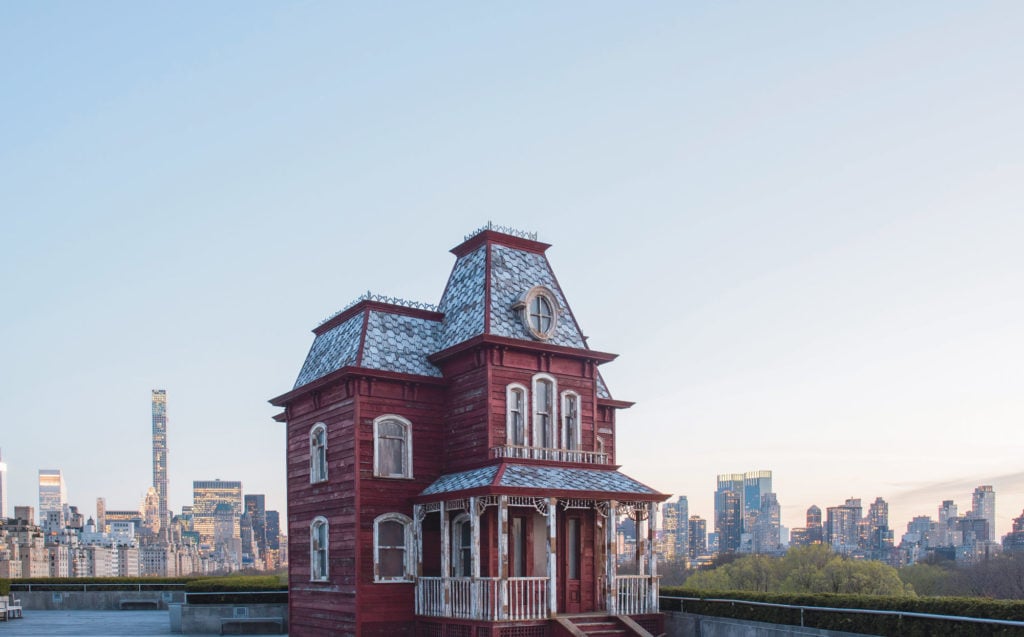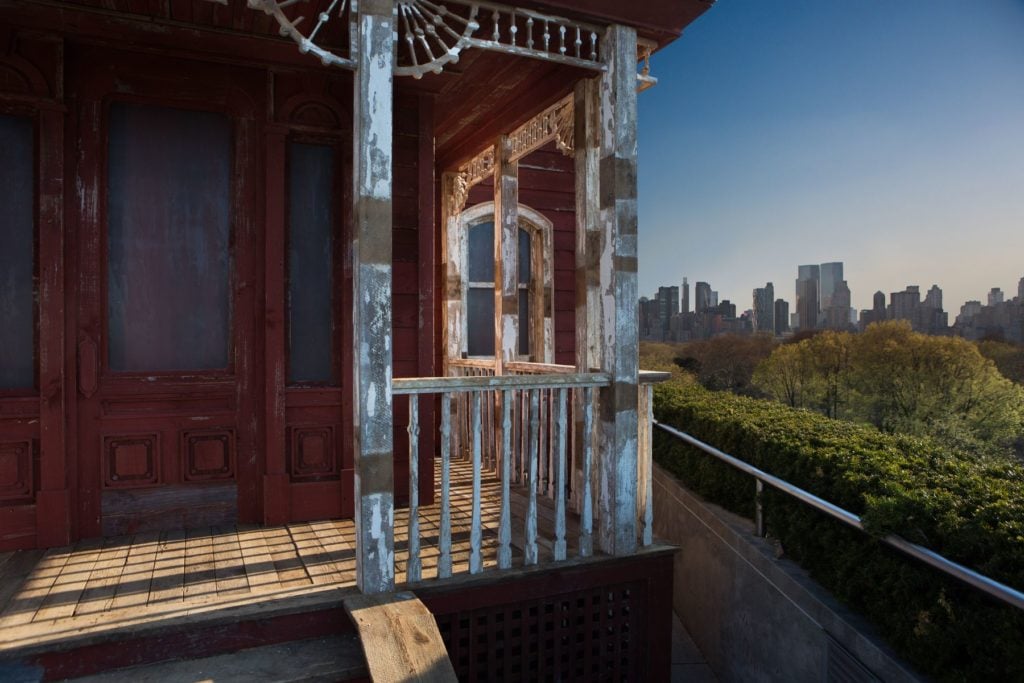On View
Time Is Running Out for Cornelia Parker’s Rooftop ‘PsychoBarn’ Sculpture
'PsychoBarn' is looking for a permanent home.

'PsychoBarn' is looking for a permanent home.

Sarah Cascone

As cooler weather sets in here in New York, the Metropolitan Museum of Art‘s popular Roof Garden Commission is nearing the end of its run.
Cornelia Parker, who created this year’s temporary site-specific work, Transitional Object (PsychoBarn), is hoping to find a permanent home for the piece, which is based on the movie set from Alfred Hitchcock’s 1960 horror film, Psycho, itself inspired by the Edward Hopper painting House by the Railroad (1925).
The Art Newspaper reports that Parker is working hard to find an institution that would accept the massive artwork as a gift before the October 31 deadline. “We have had people interested, but these things take time, which we don’t have,” said the artist.
Parker’s version of the film’s Victorian style Norman Bates mansion is created, in part, from an old barn in upstate New York. Viewed head on, it appears to be a full building, but the artist has in fact propped it up with scaffolding.

Cornelia Parker, Transitional Object (PsychoBarn) on the roof of the Met Fifth Avenue. Courtesy of photographer Hyla Skopitz, the Photograph Studio, the Metropolitan Museum of Art.
On the Met roof, seen against the backdrop of the Manhattan skyline, the spooky PsychoBarn makes for a fantastically-unexpected architectural experience, but Parker believes that the piece could be at home in a number of environments, both indoors and out.
“The Met would be pleased to see PsychoBarn have a life beyond the Cantor Roof Garden,” a museum spokesperson told TAN.
Since opening in April, the exhibition has attracted over 500,000 visitors.
Parker believes that the work will not be removed from the museum rooftop until around November 12, meaning that Halloween isn’t exactly last call for the haunted house-like work. Nevertheless, time is running out to ensure that the atmospheric work has a happy afterlife.